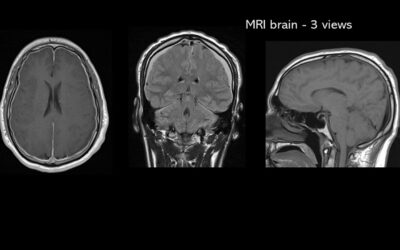Casey, a life-long adrenaline enthusiast, runs marathons and races cars for fun. But at 38, he found himself sidelined with terrible head pain.
Casey Kempner is a self-described adrenaline enthusiast, a multi-sport athlete throughout high school and college whose idea of fun is running marathons and racing cars. Pushing through pain is nothing new for him; even a motorcycle accident a few years ago didn’t slow him down. But he found himself sidelined at age 38, when he developed a sudden headache after going off-roading. He tried to sleep it off, but woke up with a thunderclap of intense head pain and the feeling that his face was numb. He went to the emergency department and had a CT done, but ultimately he was told that he probably had a migraine and was sent home. Casey knew his head pain was not migraine—he’d lived with migraine for the past 10 years, and he could tell this headache was different. Back at home, Casey noticed his headache felt better when he was lying down and worse when standing up, and so he went to his local doctor and requested an MRI. The MRI was abnormal, and so Casey was referred to a neurosurgeon.
As the weeks passed while Casey waited for his next appointment, his headache became more and more positional, and he also experienced pain between his shoulder blades and in his neck. He struggled to do basic tasks and found himself experiencing memory problems and sleep disturbances. He had begun to do research on his own, and when he met with the neurosurgeon, Casey suggested that perhaps his symptoms and the abnormal MRIs might be due to a spinal CSF leak. The neurosurgeon took this under advisement and recommended Casey have another MRI. This also came back abnormal, but the neurosurgeon believed that even if what Casey had was a spinal CSF leak, it was likely something that would resolve on its own. He recommended Casey wait another few weeks and said they would do another MRI.

But Casey’s pain had become unbearable. On the way to a friend’s wedding, he was overtaken by such terrible pain that he went straight to the emergency department, where he was admitted to the ICU for two weeks. There, he had a full spine MRI and CT myelogram, neither of which were able to locate a leak. Despite that, he was given a targeted epidural patch with fibrin glue to a suspected leak location. This kind of spinal injection procedure is often used to treat a spinal CSF leak. Though the patch initially offered some relief from his symptoms, it caused Casey to experience a different kind of headache. This was recognized as rebound intracranial high pressure, which can occur after treatment in some cases. Casey’s rebound intracranial high pressure resolved with medication—but then within a week Casey’s original headache symptoms returned.
It had been six months since the day he’d gone off-roading, and still he didn’t have any answers or relief from his pain. He was incredibly frustrated, and his head pain had begun to lose its positional aspect. He wondered if his previous neurologist had been right, that he just needed time to heal. But his symptoms persisted, and so he kept searching for answers. Finally, he found a specialist who was able to perform a digital subtraction myelogram (DSM), which ultimately confirmed that Casey did indeed have a spinal CSF leak. He had surgery to repair the leak, and though his recovery was slow (for someone used to racing full-speed), it was steady. Four months after surgery, he was able pick up where he’d left off pre-leak.
Today Casey is back to doing what he loves, racing cars and working out and playing hard. He wants people to understand that even a few months of pain is too much, and hopes that people living with spinal CSF leak will have a much quicker timeline to diagnosis and treatment in the future.
The team at Spinal CSF Leak Foundation extends our appreciation and thanks to the physicians and staff who assisted with this feature story, and to all those working so hard to help patients.
